Germany, the heart of Europe, is a land where fairy-tale castles, vibrant cities, lush forests, and rich history come together in a spectacular blend. Whether you're drawn to its cultural treasures, culinary delights, or breathtaking natural beauty, Germany offers something for every traveler. From the cosmopolitan buzz of Berlin to the medieval charm of Bavaria, here are 12 unforgettable things to do in Germany that should be on every traveler's bucket list.
Table Of Content
- 1. Explore Berlin’s Historic and Cultural Landmarks
- If you're looking to book a fantastic holiday or find the perfect accommodation, simply use these trusted links to get started with ease and confidence.
- 2. Visit Neuschwanstein Castle – The Real-Life Disney Castle
- A Brief History: King Ludwig II’s Romantic Vision
- How to Get There
- What to Expect During Your Visit
- Best Photography Spots
- Where to Eat & Stay
- When to Visit
- Quick Tips for Your Visit
- 3. Experience Oktoberfest in Munich
- What Is Oktoberfest?
- Where and When Does Oktoberfest Take Place?
- The Beer Tents: Heart of the Festival
- Dress the Part: Traditional Bavarian Attire
- Food to Try at Oktoberfest
- Music, Rides & More
- Practical Tips for a Smooth Visit
- Beyond the Festival: Explore Munich
- 4. Discover the Black Forest
- Where Is the Black Forest?
- Why Visit the Black Forest?
- Top Places to Visit in the Black Forest
- Outdoor Adventures
- Taste the Black Forest
- Cultural Highlights & Traditions
- Practical Travel Tips
- 5. Ride the Scenic Rhine Valley
- Where Is the Rhine Valley?
- How to Explore: The Scenic Train Route
- Or Take a River Cruise for a Front-Row Seat
- Outdoor Activities & Adventures
- Culinary Delights of the Rhine Valley
- Practical Travel Tips
- 6. Dive into Modern Culture in Hamburg
- Why Hamburg?
- Elbphilharmonie: A Modern Icon of Sound and Style
- Kunstmeile: Hamburg’s Contemporary Art Corridor
- HafenCity: Europe’s Largest Urban Regeneration Project
- Reeperbahn: Where Music and Subculture Collide
- Café Culture & Concept Stores: A Creative Pulse
- Green Spaces with a Modern Twist
- Where to Stay: Stylish Urban Comfort
- Annual Events That Celebrate Modern Culture
- 7. Visit the Museums of Dresden
- 1. The Old Masters Picture Gallery (Gemäldegalerie Alte Meister)
- 2. The Green Vault (Grünes Gewölbe)
- 3. Deutsches Hygiene-Museum (German Hygiene Museum)
- 4. Dresden City Museum (Stadtmuseum Dresden)
- 5. Albertinum – New Masters Gallery & Sculpture Collection
- 6. Mathematisch-Physikalischer Salon
- 7. Dresden Royal Palace (Residenzschloss)
- 8. Museum of Military History (Militärhistorisches Museum)
- Planning Your Museum Tour
- 8. Indulge in German Wine in the Moselle Valley
- Where Is the Moselle Valley?
- What Makes Moselle Wine So Special?
- Top Wine Towns to Explore
- Must-Try Wine Experiences
- Food Pairings: Savor the Region
- Where to Stay for the Ultimate Wine Escape
- Getting Around the Moselle Valley
- Sustainability and Modern Winemaking
- 9. Cycle Through the Bavarian Countryside
- Why Cycle in the Bavarian Countryside?
- Top Cycling Routes in the Bavarian Countryside
- Tips for Cycling in the Bavarian Countryside
- 10. Celebrate Christmas in a Traditional Market
- Why Celebrate Christmas in a Traditional German Market?
- Top German Christmas Markets to Visit
- Traditional Food and Drink at German Christmas Markets
- Shopping for Unique Christmas Gifts
- 11. Attend a Classical Concert or Opera
- Why Attend a Classical Concert or Opera in Germany?
- Must-Visit Venues for Classical Music in Germany
- Tips for Attending a Classical Concert or Opera in Germany
- 12. Discover Roman History in Trier
- Why Visit Trier for Roman History?
- Must-See Roman Sites in Trier
- Tips for Exploring Trier’s Roman History
This blog contains affiliate links, which means I may earn a commission if you make a purchase through these links, at no additional cost to you.
1. Explore Berlin’s Historic and Cultural Landmarks
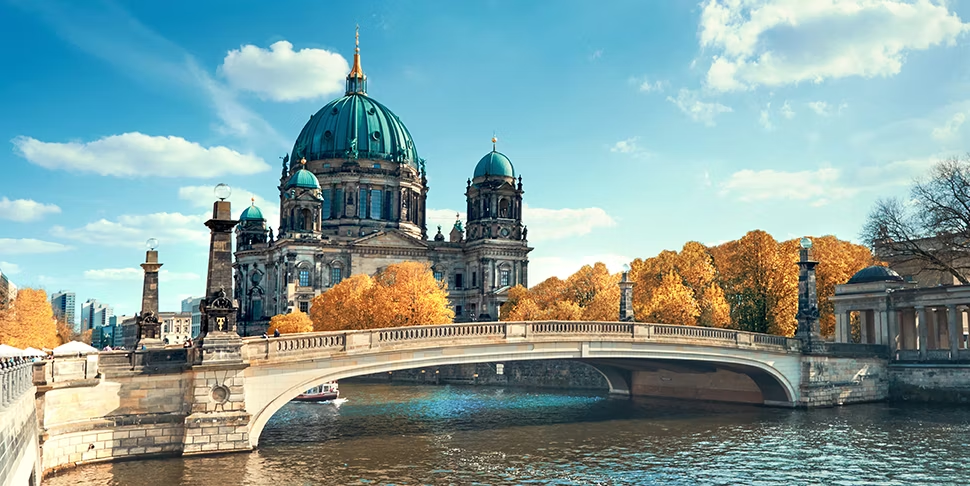
Germany's capital is a dynamic mix of old and new. Walk along the remnants of the Berlin Wall, visit the powerful Holocaust Memorial, and marvel at the Brandenburg Gate. Don’t miss Museum Island, home to some of Europe’s most impressive museums.
Berlin, the capital of Germany, is a city like no other—a place where history, innovation, and culture converge in extraordinary ways. With a turbulent past, a dynamic present, and an ever-evolving spirit, Berlin invites travelers to explore its iconic landmarks and hidden gems that speak volumes about resilience, creativity, and change. Whether you're a history buff, art lover, or curious wanderer, Berlin's historic and cultural sites promise an unforgettable journey.
If you're planning a trip or looking for anything travel-related—flights, hotels, tours, or inspiration—be sure to check out these great links for the best options!
Pro Tip: Take a guided walking tour to fully understand the city’s complex history and cultural evolution.
- The Brandenburg Gate: Symbol of Unity
Standing tall since the late 18th century, the Brandenburg Gate is Berlin’s most iconic landmark. Originally a symbol of division during the Cold War, it now stands as a powerful representation of German reunification.
Travel Tip: Visit at sunset or at night when it’s beautifully illuminated. It’s also a central point for national celebrations and historical remembrances.
- The Berlin Wall Memorial & East Side Gallery
No visit to Berlin is complete without acknowledging its divided past. Visit the Berlin Wall Memorial on Bernauer Straße to understand the reality of the Cold War era. For a more artistic take, stroll along the East Side Gallery—a 1.3 km stretch of the original wall covered in murals by artists from around the world.
Must-See Mural: “The Fraternal Kiss” by Dmitri Vrubel.
- Reichstag Building: Politics with a View
Home to the German parliament, the Reichstag is a striking mix of historic architecture and modern innovation. The glass dome, designed by Sir Norman Foster, offers panoramic views of Berlin and symbolizes transparency in democracy.
Pro Tip: Entry is free, but reservations are required. Book your dome tour in advance to avoid long queues.
- Memorial to the Murdered Jews of Europe
Also known as the Holocaust Memorial, this haunting yet powerful site consists of 2,711 concrete slabs of varying heights, arranged in a grid near the Brandenburg Gate. It’s a solemn place of reflection and remembrance.
Don’t Miss: The underground information center beneath the memorial provides context, personal stories, and historical documentation.
- Museum Island: A UNESCO World Heritage Treasure
Nestled in the heart of the city, Museum Island is home to five world-renowned museums, including:
- Pergamon Museum – Ancient artifacts from Mesopotamia and Islamic art.
- Altes Museum – Classical antiquities.
- Neues Museum – Home to the iconic bust of Queen Nefertiti.
Travel Tip: Purchase a Museum Pass for access to all museums at a discounted rate.
- Berlin Cathedral (Berliner Dom)
Adjacent to Museum Island stands the magnificent Berlin Cathedral, an architectural masterpiece of the High Renaissance style. Step inside to admire its ornate interiors, and climb to the dome for spectacular city views.
Fun Fact: The cathedral also houses the Hohenzollern crypt, the burial site of Prussian royals.
- Kulturforum & Gemäldegalerie
For lovers of fine art, the Kulturforum is a must. The Gemäldegalerie features one of the world’s most significant collections of European paintings from the 13th to 18th centuries, including works by Rembrandt, Vermeer, and Botticelli.
- Charlottenburg Palace: A Glimpse into Royal Life
Step back into the Baroque era with a visit to Charlottenburg Palace, Berlin’s largest and most opulent royal residence. Explore its lavish interiors, manicured gardens, and elegant ballrooms for a taste of Prussian royalty.
Insider Tip: Visit the palace during the holiday season for one of Berlin’s most charming Christmas markets.
- Jewish Museum Berlin
Designed by architect Daniel Libeskind, the Jewish Museum is not only a cultural institution but also a poignant piece of architectural storytelling. Its exhibitions explore the history of Jews in Germany, interwoven with themes of identity, exile, and memory.
- Walk Through History at Unter den Linden
This historic boulevard stretches from the Brandenburg Gate to Museum Island and is lined with key sites including the Humboldt University, State Opera, and Neue Wache memorial. A leisurely walk here is like stepping through centuries of European history.
If you're looking to book a fantastic holiday or find the perfect accommodation, simply use these trusted links to get started with ease and confidence.
2. Visit Neuschwanstein Castle – The Real-Life Disney Castle
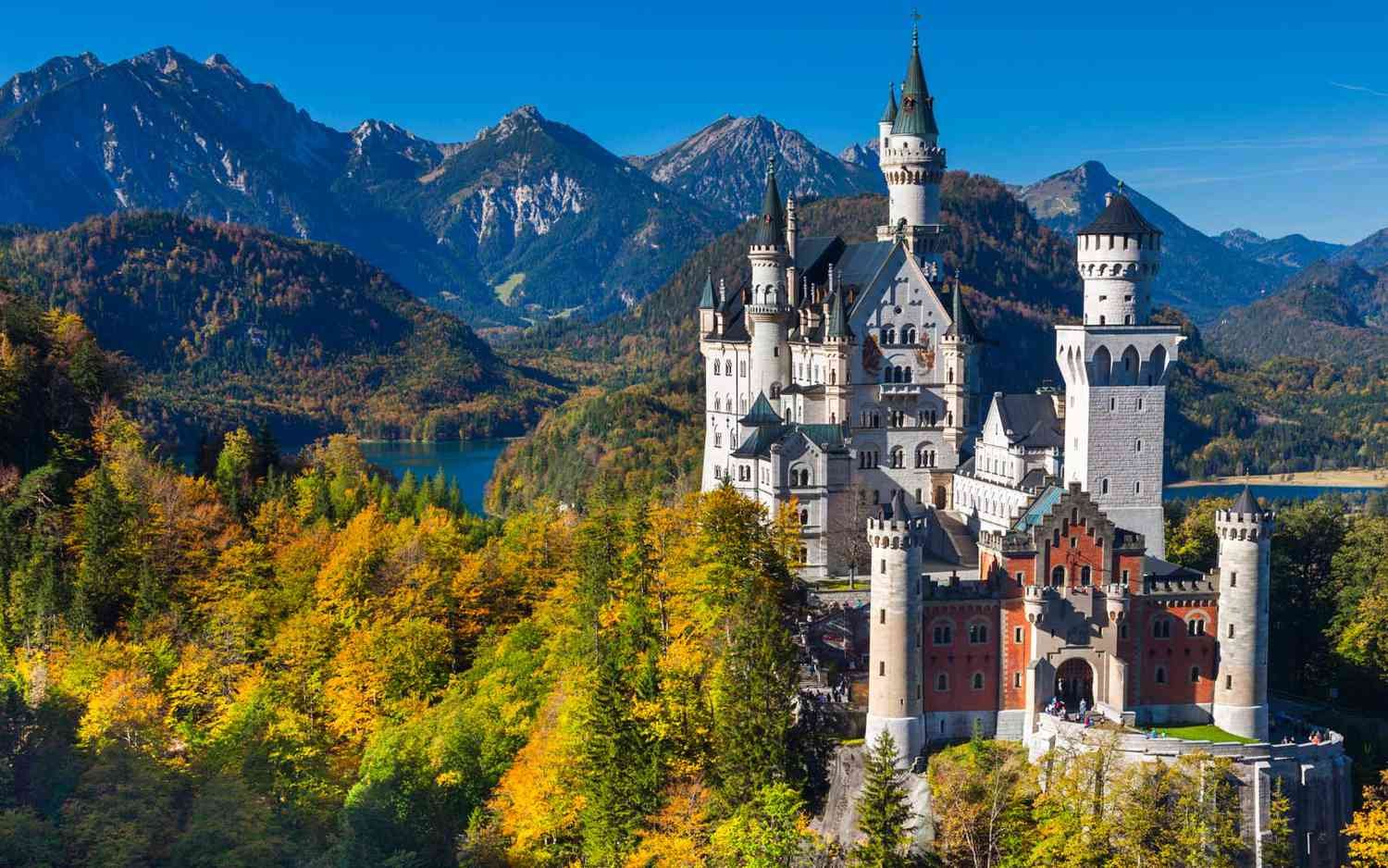
Perched high on a rugged hill in the Bavarian Alps, Neuschwanstein Castle is one of the most enchanting landmarks in the world. With its fairy-tale turrets, forested surroundings, and snow-capped mountains in the distance, it’s no surprise this iconic castle inspired Walt Disney’s Sleeping Beauty Castle. But beyond its magical appearance lies a fascinating story of art, fantasy, and a king who dreamed in grandeur.
Whether you’re a history lover, architecture enthusiast, or simply chasing the magic of Europe’s fairy-tale destinations, a visit to Neuschwanstein Castle is an unforgettable experience.
A Brief History: King Ludwig II’s Romantic Vision
Commissioned by King Ludwig II of Bavaria in 1869, Neuschwanstein was never meant to be a fortress of war but rather a private retreat steeped in medieval romance and Wagnerian mythology. The king, often referred to as the "Fairy Tale King," was an eccentric dreamer with a deep passion for music, particularly the operas of Richard Wagner.
Tragically, Ludwig died in mysterious circumstances in 1886 before the castle was completed, and he lived in it for only a few months. Today, his vision lives on in this architectural masterpiece, drawing over 1.4 million visitors each year.
How to Get There
Location: Neuschwanstein Castle is located near the town of Füssen in southwest Bavaria, Germany.
From Munich:
- 🚆 By Train: Take a train to Füssen (approx. 2 hours), then a short bus ride to Hohenschwangau village.
- 🚗 By Car: About 1 hour and 45 minutes via the A96 and B17 highways.
Travel Tip: Arrive early to avoid the crowds, especially during summer and holiday seasons.
What to Expect During Your Visit
Entry & Tours
Access to the interior is only available via guided tours, which are offered in multiple languages and last approximately 30–40 minutes. Tickets must be purchased in advance through the official website or at the Ticket Center in Hohenschwangau.
The Hike Up
From the ticket center, it’s about a 30–40 minute uphill walk to the castle. Alternatively, you can take a horse-drawn carriage or shuttle bus (available seasonally).
Don’t Miss: The scenic viewpoint at Marienbrücke (Mary’s Bridge), which offers the most famous panoramic view of the castle with the Alps as a backdrop.
Inside the Castle
While much of Neuschwanstein remains unfinished, the completed rooms are stunning:
- The Throne Room – Inspired by Byzantine churches, this majestic hall features gold chandeliers and mosaic floors.
- The Singer’s Hall – Modeled after the Wartburg Castle and used for musical performances.
- Ludwig’s Bedroom – A Gothic-style room with intricate wood carvings and hidden details.
Best Photography Spots
- Marienbrücke (Mary’s Bridge): Best for iconic wide-angle shots.
- The hill behind Marienbrücke: For a quieter, slightly elevated perspective.
- Below the castle near Alpsee Lake: For beautiful water reflections and natural frames.
Where to Eat & Stay
Nearby Dining:
- Alpenstuben Restaurant – Cozy Bavarian cuisine with castle views.
- Schlossbrauhaus Schwangau – A local brewery with hearty meals and beer.
Overnight Options:
- Hotel Müller Hohenschwangau – Just a short walk from the castle.
- AMERON Neuschwanstein Alpsee Resort & Spa – Luxury accommodation with spa and lake views.
Suggestion: Consider staying overnight in Füssen to explore the surrounding area at a relaxed pace.
When to Visit
Each season offers its own charm:
- Spring/Summer: Lush green forests and clear views.
- Fall: Vibrant foliage with golden hues.
- Winter: Snow-dusted castle scenes straight out of a fairy tale (weather-dependent access).
Note: Marienbrücke may close during winter for safety reasons.
Quick Tips for Your Visit
- Book tickets well in advance, especially in peak season.
- Wear comfortable shoes for the hike.
- Bring layers, as weather in the mountains can change quickly.
- Photography inside the castle is not allowed.
When to Go: Visit in fall for fewer crowds and golden autumn scenery.
3. Experience Oktoberfest in Munich
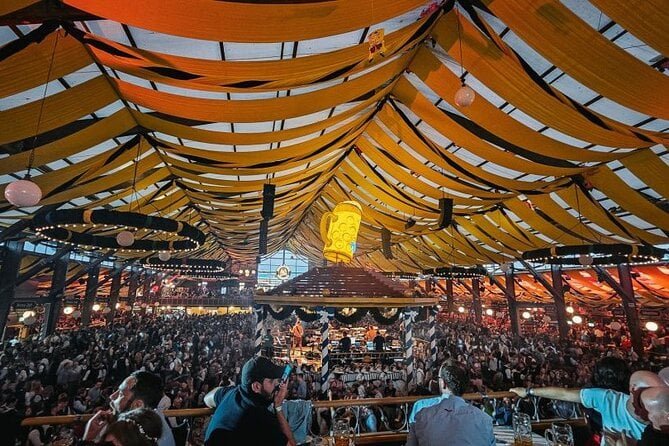
If you’re in Germany during late September to early October, experiencing Oktoberfest in Munich is a must. It's the world’s largest beer festival, complete with traditional Bavarian clothing, food, music, and—of course—giant steins of beer.
Every year, over six million people from around the globe descend upon Munich, Germany, for one of the most iconic cultural celebrations in the world—Oktoberfest. Synonymous with steins of golden beer, lively Bavarian music, traditional attire, and unforgettable revelry, Oktoberfest is far more than a beer festival—it's a once-in-a-lifetime experience steeped in tradition, community, and celebration.
If you're considering a visit to Oktoberfest or simply want to understand what makes it so special, this guide will walk you through everything you need to know.
What Is Oktoberfest?
Oktoberfest is a 16–18 day festival held annually in Munich, beginning in late September and ending on the first Sunday of October. It originated in 1810 to celebrate the royal wedding of Crown Prince Ludwig (later King Ludwig I) and Princess Therese of Saxony-Hildburghausen. The citizens of Munich were invited to attend festivities held on the fields in front of the city gates—now called the Theresienwiese, or simply Wiesn.
More than 200 years later, it has evolved into the world’s largest Volksfest (people’s festival), blending centuries-old customs with modern flair.
Where and When Does Oktoberfest Take Place?
- Location: Theresienwiese (Wiesn), Munich, Germany
- 2025 Dates: September 20 – October 5, 2025
- Entry: Free (but beer tents can get very crowded—table reservations are recommended)
The Beer Tents: Heart of the Festival
Oktoberfest features 14 large tents and 20+ smaller tents, each with its own atmosphere, menu, and musical lineup. Only beer brewed within Munich’s city limits, following Reinheitsgebot (the German Beer Purity Law), is served.
Must-Visit Tents:
- Schottenhamel – Where the festival begins with the tapping of the first keg by the Mayor of Munich.
- Hofbräu-Festzelt – Popular among international visitors, with a lively atmosphere and standing area.
- Augustiner-Festhalle – Known for the friendliest vibe and beer served from traditional wooden barrels.
- Käfer’s Wiesn-Schänke – A gourmet option favored by celebrities and late-night revelers.
Pro Tip: Reserve tables early—ideally 6–12 months in advance for popular tents and weekend slots.
Dress the Part: Traditional Bavarian Attire
Wearing Lederhosen (for men) and Dirndls (for women) isn’t just encouraged—it’s part of the fun and local tradition.
- Lederhosen: Knee-length leather breeches, often worn with a checkered shirt and suspenders.
- Dirndl: A classic Bavarian dress with a tight bodice, blouse, full skirt, and apron.
Insider Tip: The position of the apron bow in a Dirndl carries meaning—right side means taken, left means single, and center front means a virgin or younger girl.
Food to Try at Oktoberfest
Oktoberfest is as much about food as it is about beer. The festival is a showcase of Bavarian cuisine and hearty German fare.
Don’t Miss:
- Hendl (roast chicken)
- Schweinshaxe (pork knuckle)
- Weißwurst (white sausage)
- Brezn (giant pretzels)
- Apfelstrudel (apple strudel)
- Obatzda (cheese spread with pretzels)
Pair your meal with a Maß (1-liter mug) of crisp, cold Bavarian beer for the full experience.
Music, Rides & More
While beer may be the main attraction, Oktoberfest is packed with live music, carnival rides, parades, and family-friendly activities.
Highlights:
- Opening Day Parade: Traditional costume and riflemen's parade with thousands of performers.
- Traditional Music: Oompah bands play classics and German drinking songs inside the tents.
- Fairground Attractions: Giant Ferris wheel, roller coasters, games, and haunted houses.
- Family Days: Tuesdays are designated family days with reduced ride prices and a quieter atmosphere.
Practical Tips for a Smooth Visit
- Arrive Early: Especially on weekends or if you don’t have a reservation.
- Bring Cash: Many vendors and tents accept only cash.
- Pace Yourself: The beer is strong (~6% ABV) and served in full-liter mugs.
- Respect the Rules: Don't stand on benches or take glass mugs home—they’re not souvenirs.
- Use Public Transit: Munich’s U-Bahn and S-Bahn make getting to Theresienwiese easy and safe.
Beyond the Festival: Explore Munich
Extend your trip by exploring the beautiful city of Munich:
- Marienplatz – The historic city center with the Glockenspiel.
- English Garden – One of the largest urban parks in Europe.
- Nymphenburg Palace – A stunning Baroque residence.
- BMW Museum and Deutsches Museum – For car lovers and science enthusiasts.
Don’t Miss: Try traditional dishes like Weißwurst, Brezn (pretzels), and Schweinshaxe (pork knuckle).
4. Discover the Black Forest
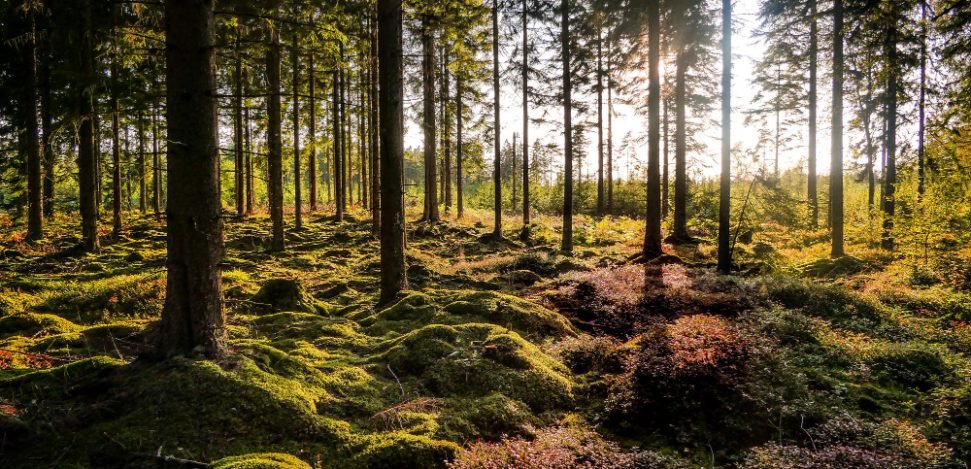
The Black Forest (Schwarzwald) is a magical region of dense woods, charming villages, and rolling hills. Hike or bike through its trails, visit the spa town of Baden-Baden, and taste the famous Black Forest cake.
Tucked away in the southwest corner of Germany, the Black Forest (Schwarzwald) is a region straight out of a fairy tale. With its dense pine-covered hills, half-timbered villages, cuckoo clocks, and rich folklore, this magical destination has captivated travelers for centuries. Whether you're seeking outdoor adventure, cultural heritage, or simply a peaceful retreat into nature, the Black Forest promises a diverse and unforgettable experience.
Recommended Spot: Triberg, home to Germany’s highest waterfalls and traditional cuckoo clocks.
Where Is the Black Forest?
Located in the state of Baden-Württemberg, the Black Forest stretches from the spa town of Baden-Baden in the north to the charming town of Waldshut on the Swiss border in the south. The region borders France to the west and Switzerland to the south, making it an excellent destination for multi-country European trips.
Why Visit the Black Forest?
The Black Forest is known for:
- Breathtaking landscapes: Rolling hills, deep forests, mountain lakes, and picturesque valleys.
- Charming towns and villages: Think timber-framed houses, cobblestone streets, and traditional markets.
- Cultural heritage: World-famous cuckoo clocks, folklore, and Black Forest cake.
- Outdoor activities: Hiking, cycling, skiing, and thermal spas.
Top Places to Visit in the Black Forest
- Baden-Baden: Spa Town Luxury
Famous for its thermal baths, elegant casinos, and historic villas, Baden-Baden is the perfect place to unwind. Enjoy a traditional spa experience at Friedrichsbad or Caracalla Therme, then stroll through the Lichtentaler Allee and the old town.
- Triberg: Waterfalls & Cuckoo Clocks
Triberg is home to Germany’s highest waterfalls and the world’s largest cuckoo clock. It's a great base to explore Black Forest traditions and folklore at the Black Forest Museum.
Don’t Miss: Try a slice of authentic Black Forest cake (Schwarzwälder Kirschtorte) in a local café. - Freiburg im Breisgau: Sunny University City
Freiburg is a vibrant city at the edge of the southern Black Forest. Known for its eco-conscious culture, gothic cathedral, and medieval old town, it’s an excellent mix of history and modern lifestyle.
- Schiltach & Gengenbach: Storybook Villages
These lesser-known gems boast stunning half-timbered architecture, colorful houses, and peaceful riverside scenes. Gengenbach is especially magical during the holiday season with its Advent Calendar House.
- Lake Titisee: Alpine Serenity
A glacial lake surrounded by forested hills, Titisee is a popular spot for boating, swimming, and scenic walks. Nearby, Hinterzarten offers excellent winter sports and hiking trails.
- Mummelsee & Hornisgrinde: Mystical Mountain Views
The Mummelsee, a small lake steeped in legend, sits near the summit of Hornisgrinde, the Black Forest’s highest mountain. Enjoy panoramic views and local folklore about water spirits and mountain myths.
Outdoor Adventures
The Black Forest is a paradise for nature lovers and adventure seekers.
- Hiking: Explore over 23,000 kilometers of trails, including the famous Westweg, which runs from Pforzheim to Basel.
- Cycling: Tackle forest paths or road cycling routes with stunning views.
- Skiing & Snowshoeing: In winter, the Black Forest turns into a snowy wonderland with ski resorts like Feldberg.
- Wellness Escapes: Take advantage of the region’s natural springs and spa hotels for a wellness retreat.
Taste the Black Forest
Beyond its famous cake, the region offers a culinary journey rooted in tradition and local produce.
- Schwarzwälder Schinken – Cured Black Forest ham.
- Brägele – Fried potatoes with herbs and onions.
- Kirschwasser – A cherry schnapps used in desserts and sipped after meals.
- Hearty stews and sausages – Often enjoyed in cozy mountain inns.
Pair your meal with a local wine or beer from the Baden region, which boasts some of Germany’s sunniest vineyards.
Cultural Highlights & Traditions
- Cuckoo Clock Villages: Visit Schonach or Titisee-Neustadt for clock workshops and to see traditional craftsmanship in action.
- Open-Air Museums: The Vogtsbauernhof in Gutach showcases traditional Black Forest farm life and architecture.
- Festivals: Seasonal events, like the Fastnacht (Carnival) and Christmas markets, highlight the region’s rich customs and folklore.
Practical Travel Tips
- Best Time to Visit: Spring through autumn is perfect for hiking and sightseeing; winter offers a cozy escape with snow and seasonal charm.
- Getting There: Closest airports are in Stuttgart, Frankfurt, or Zurich. A rental car is ideal for exploring at your own pace.
- Language: German is spoken, but English is widely understood in tourist areas.
- Currency: Euro (€)
5. Ride the Scenic Rhine Valley
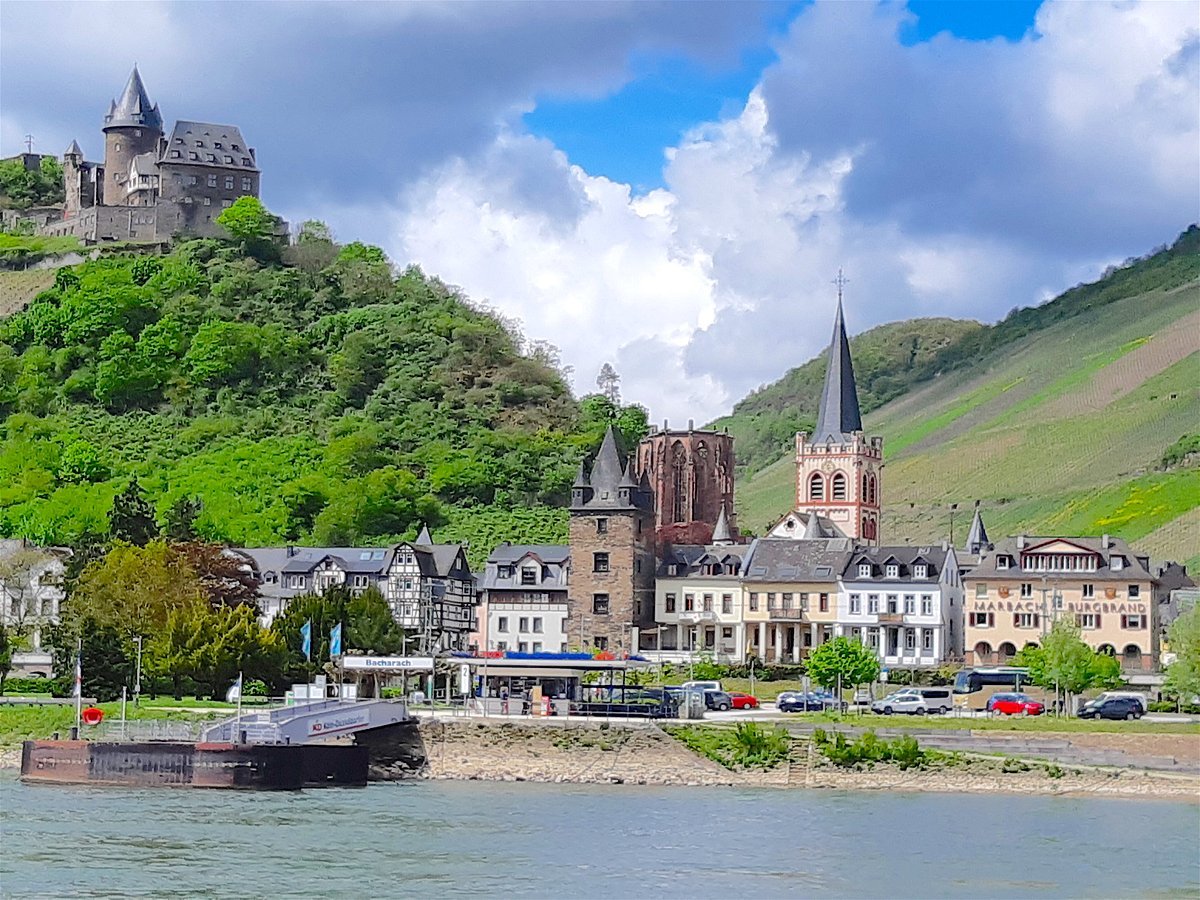
Take a river cruise along the Rhine River and enjoy views of medieval castles, vineyard-covered hills, and quaint villages like Bacharach and Rüdesheim. It’s one of Europe’s most picturesque landscapes.
Germany's Rhine Valley is one of Europe’s most picturesque regions, where storybook castles perch above terraced vineyards, charming medieval towns hug the riverbanks, and the mighty Rhine River winds gracefully through a landscape rich in history and legend. Whether you're exploring by train, boat, or car, riding through the Upper Middle Rhine Valley is like stepping into a living postcard.
Designated a UNESCO World Heritage Site, this stretch between Koblenz and Bingen is a must-see for travelers in search of natural beauty, cultural heritage, and unforgettable views. Here's your professional guide to experiencing the Rhine Valley in the most scenic and memorable way.
Where Is the Rhine Valley?
The Rhine Valley refers to the region along the Rhine River—one of Europe’s most important waterways. The most scenic and historic portion, known as the Upper Middle Rhine Valley, lies in western Germany, between the cities of Koblenz (to the north) and Bingen or Rüdesheim (to the south).
How to Explore: The Scenic Train Route
One of the most relaxing and immersive ways to experience the Rhine Valley is by train. The regional train line (RE or RB) runs parallel to the river, offering panoramic views from the comfort of your seat.
- Route: Koblenz – Boppard – St. Goar – Oberwesel – Bacharach – Bingen/Rüdesheim
- Duration: Approx. 1.5 hours, depending on stops
- Ticket Tip: Use the Rheinland-Pfalz Ticket for unlimited travel in the region for one day (great value for groups).
Pro Tip: Sit on the left side when heading south (Koblenz to Bingen) for the best views of castles and vineyards.
Or Take a River Cruise for a Front-Row Seat
For a truly unforgettable experience, opt for a Rhine River cruise. Several companies like KD (Köln-Düsseldorfer) offer hop-on-hop-off cruises along the UNESCO stretch.
- Highlights Seen from the Water:
- Majestic castles (Marksburg, Rheinfels, Schönburg)
- The mythical Lorelei Rock
- Rolling vineyards and half-timbered towns
Ideal for: Photography, slow travel, and a romantic perspective on the valley.
Top Attractions Along the Rhine
- Koblenz – Where the Rivers Meet
Start your journey at the confluence of the Rhine and Moselle rivers. Don’t miss the Deutsches Eck (German Corner) and the Ehrenbreitstein Fortress, accessible via a scenic cable car ride.
- Boppard – Riverside Charm
A delightful town known for its Roman heritage, peaceful river promenade, and excellent hiking trails like the Rheinburgenweg.
- St. Goar & St. Goarshausen – Castles and Legends
Home to the dramatic ruins of Rheinfels Castle and directly across the river, the picturesque Lorelei Rock, steeped in legends of sirens and sailors.
- Oberwesel – City of Towers
Known for its well-preserved medieval walls, Gothic churches, and the fairytale Schönburg Castle, now a luxurious hotel with panoramic views.
- Bacharach – A Hidden Gem
With its romantic half-timbered houses, ivy-covered ruins, and cozy wine taverns, Bacharach is a quintessential Rhine Valley town.
- Bingen & Rüdesheim – Vineyards and Culture
At the southern end, enjoy wine tastings, a visit to the Niederwald Monument, or a ride on the Rüdesheim cable car over the vineyards.
Wine Tip: Try the region’s famous Riesling—crisp, floral, and perfect with a view of the river.
Outdoor Activities & Adventures
- Hiking Trails: The Rheinsteig and Rheinburgenweg trails offer some of Germany’s most scenic walking routes, with castle views and vineyard paths.
- Cycling: The Rhine Cycle Route (EuroVelo 15) runs along the river and is ideal for a multi-day bike trip.
- Castle Hopping: Many castles are open to the public and offer guided tours, museums, and events.
Culinary Delights of the Rhine Valley
The region’s cuisine blends hearty German fare with refined wine country flavors.
Local Specialties:
- Sauerbraten (marinated roast beef)
- Zwiebelkuchen (onion tart) – great with new wine in autumn
- Handkäse mit Musik – a regional cheese delicacy
- Riesling wines – crisp and aromatic, the pride of the Rhine
Enjoy riverside dining with views of vineyards and passing boats, or indulge in a cozy wine cellar beneath medieval arches.
Practical Travel Tips
- Best Time to Visit: Late spring to early autumn (May–October) for warm weather, festivals, and river cruises.
- Where to Stay: Consider spending a night in a castle hotel, a vineyard guesthouse, or a charming riverside inn.
- Language: German is spoken, but English is widely understood in tourist areas.
- Getting Around: Combine train + cruise + hiking/cycling for a varied and immersive itinerary.
6. Dive into Modern Culture in Hamburg
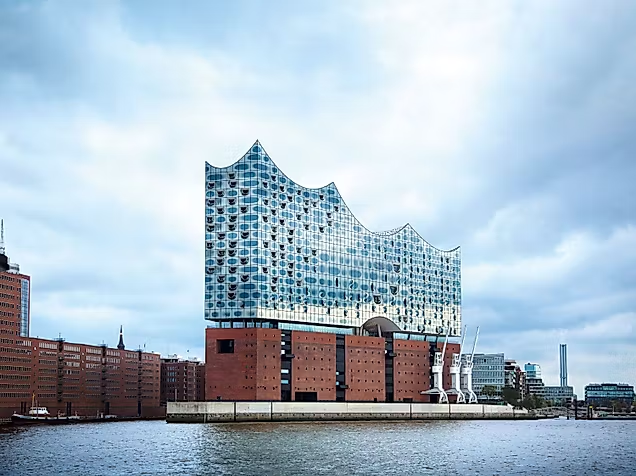
Hamburg, Germany’s second-largest city, is a maritime gem. Visit the stunning Elbphilharmonie concert hall, stroll through the Speicherstadt (world’s largest warehouse district), and enjoy the nightlife in St. Pauli.
When it comes to modern culture, Hamburg stands in a league of its own. Known as Germany’s “Gateway to the World”, this dynamic port city blends industrial heritage with cutting-edge creativity, offering an irresistible mix of art, architecture, music, fashion, and urban innovation. Whether you’re a culture connoisseur or a curious traveler, Hamburg invites you to experience the bold, the beautiful, and the unexpected.
From avant-garde architecture to experimental cuisine, discover how Hamburg is redefining contemporary culture—one neighborhood, gallery, and stage at a time.
Why Hamburg?
Unlike Germany’s more traditional cities, Hamburg thrives on progress and reinvention. As a hub for shipping, media, design, and the arts, it has long embraced global influences while maintaining its own unique character. With waterways winding through the city, a vibrant music scene, and boundary-pushing creativity, Hamburg offers a modern, cosmopolitan experience rooted in innovation.
Elbphilharmonie: A Modern Icon of Sound and Style
No exploration of modern Hamburg is complete without a visit to the Elbphilharmonie, the city’s architectural and cultural crown jewel. Perched dramatically on the Elbe River, this glass-clad concert hall rises above a historic brick warehouse, symbolizing the city’s fusion of old and new.
- What to Do: Catch a concert, take a guided tour, or simply admire the panoramic views from the Plaza observation deck.
- Why It Matters: With acoustics engineered by master designer Yasuhisa Toyota, it’s one of the world’s most acoustically advanced performance spaces.
Kunstmeile: Hamburg’s Contemporary Art Corridor
Art lovers will find a vibrant scene along Hamburg’s Kunstmeile (Art Mile), a collection of five major art institutions within walking distance.
Highlights include:
- Hamburger Kunsthalle – A blend of classic and contemporary works
- Deichtorhallen – One of Europe’s largest centers for contemporary art and photography
- Museum für Kunst und Gewerbe – Focused on design, fashion, and applied arts
Insider Tip: Grab a Kunstmeilenpass for discounted access to all five museums.
HafenCity: Europe’s Largest Urban Regeneration Project
Once a gritty harbor area, HafenCity is now a showcase of modern urban planning, sustainable design, and architectural innovation.
- What to See: Striking new buildings like the Marco Polo Tower, Unilever House, and cultural spaces like the International Maritime Museum.
- What to Do: Stroll along the canals, explore modern parks, or relax at stylish waterfront cafés.
Reeperbahn: Where Music and Subculture Collide
The legendary Reeperbahn in St. Pauli is Hamburg’s boldest cultural district, once the stomping ground of The Beatles and now a nucleus for alternative culture and live music.
- Don’t Miss:
- Indra Club and Kaiserkeller – Beatles history meets modern acts
- Reeperbahn Festival – Europe’s biggest club festival for new music and media
- Street art tours showcasing the raw creative energy of the district
Good to Know: The Reeperbahn isn’t just nightlife—it’s a platform for progressive arts, LGBTQ+ culture, and independent theater.
Café Culture & Concept Stores: A Creative Pulse
Modern Hamburg expresses itself in its coffee scene and design-forward shopping.
- Cafés to Try:
- Elbgold – Artisanal coffee roasters in a chic industrial setting
- Less Political – Minimalist, hip, and rooted in the specialty brew movement
- Törnqvist – A Scandinavian-inspired gem for pour-over perfection
- Concept Stores & Boutiques:
- LUV Interior – Scandinavian meets maritime design
- YBDPT – Young Blooded Designers Pop-Up Store for local fashion
- Oschätzchen – Gourmet delicacies and sleek packaging
Green Spaces with a Modern Twist
Even nature in Hamburg feels current, with eco-conscious design and urban greenery taking center stage.
- Planten un Blomen: An inner-city park with futuristic light and water shows, Japanese gardens, and public art installations.
- Wilhelmsburg’s IBA Park: Part of the International Building Exhibition, it’s a landscape that merges environmental innovation with public enjoyment.
Where to Stay: Stylish Urban Comfort
Hamburg offers a wide range of design-centric accommodations perfect for culture seekers.
- 25hours Hotel HafenCity: Playful nautical themes and bold interiors
- The George Hotel: British-style elegance meets modern boutique comfort
- Gastwerk Hotel: Industrial-chic vibe inside a former gas plant
Annual Events That Celebrate Modern Culture
- Elbjazz Festival – Jazz in the harbor’s most atmospheric venues
- Dockville Festival – Where music, art, and performance intersect in Wilhelmsburg
- Hamburg International Short Film Festival – A showcase for rising talent and cinematic experimentation
- DesignXport – Hamburg’s hub for design innovation and collaboration
7. Visit the Museums of Dresden

Often called the “Florence on the Elbe,” Dresden boasts beautiful Baroque architecture and a vibrant arts scene. Don’t miss the Zwinger Palace, Frauenkirche, and the Old Masters Gallery.
Nestled along the banks of the Elbe River, Dresden—often referred to as the "Florence on the Elbe"—is a cultural treasure trove in eastern Germany. While the city is renowned for its baroque architecture and regal past, its world-class museums offer a profound and immersive experience for every type of traveler. Whether you’re a lover of fine art, fascinated by history, or intrigued by science and technology, Dresden’s museums are gateways into centuries of creativity, resilience, and discovery.
Here’s your professional guide to the must-visit museums in Dresden—each one a testament to the city’s enduring spirit and cultural richness.
1. The Old Masters Picture Gallery (Gemäldegalerie Alte Meister)
Located in the magnificent Zwinger Palace, the Old Masters Gallery is one of Europe’s most important collections of Renaissance and Baroque paintings.
Highlights:
- Raphael’s "Sistine Madonna"
- Works by Titian, Rembrandt, Vermeer, Rubens, and van Eyck
- Stunning ceiling frescoes and opulent halls
Why Visit?
This gallery is a masterpiece in itself—offering a visual journey through the golden ages of European painting.
2. The Green Vault (Grünes Gewölbe)
Housed in the Royal Palace (Residenzschloss), the Green Vault showcases the jaw-dropping treasures of the Saxon kings. Divided into the Historic and New Green Vault, it offers a glimpse into royal opulence.
Highlights:
- Intricately crafted gold, silver, and gemstone treasures
- The Moor with Emerald Cluster sculpture
- One of Europe’s oldest treasure chambers (established in 1723)
Tip: Tickets to the Historic Green Vault are limited and must be booked in advance.
3. Deutsches Hygiene-Museum (German Hygiene Museum)
Don’t let the name fool you—this is one of Germany’s most innovative science museums, focusing on the human body, health, and social issues.
Exhibits Explore:
- The five senses
- The brain and emotions
- Medical history and future healthcare
Great for: Families, science enthusiasts, and anyone curious about the intersection of biology, society, and ethics.
4. Dresden City Museum (Stadtmuseum Dresden)
Located in the Landhaus, this museum provides a comprehensive overview of Dresden’s 800-year history—from its royal beginnings to post-reunification developments.
Highlights:
- Interactive exhibits on WWII and the 1945 bombings
- Urban development, culture, and everyday life through the centuries
- Temporary exhibitions on current city issues
Why Go?
To understand Dresden's unique evolution and resilience through war, reconstruction, and cultural revival.
5. Albertinum – New Masters Gallery & Sculpture Collection
For those interested in modern and contemporary art, the Albertinum is the go-to destination. It houses works from the 19th century to present day, all displayed in a stunningly restored former armory.
Featured Artists:
- Caspar David Friedrich, Otto Dix, Gerhard Richter, Rodin, and more
- Sculptures from antiquity to modernism
Bonus: The building itself is a masterpiece of modern museum architecture with open spaces and natural light.
6. Mathematisch-Physikalischer Salon
Also part of the Zwinger complex, this museum offers a fascinating look into early scientific instruments and the history of navigation, timekeeping, and astronomy.
Must-See Exhibits:
- Ancient globes and planetary models
- 18th-century telescopes and clocks
- Optical devices used by Saxon nobility
Appeals to: Science buffs, students, and those fascinated by early innovations in technology.
7. Dresden Royal Palace (Residenzschloss)
Beyond the Green Vault, the Royal Palace is home to multiple exhibition spaces including:
- The Armory (Rüstkammer) – Historic weapons, armor, and tournament culture
- The Coin Cabinet (Münzkabinett) – One of the oldest numismatic collections in the world
- Turkish Chamber – Rare Ottoman artifacts and ceremonial weapons
Tip: Allocate at least half a day to explore the full scope of this museum complex.
8. Museum of Military History (Militärhistorisches Museum)
Redesigned by architect Daniel Libeskind, this striking museum is one of the most important of its kind in Europe. It takes a critical and reflective approach to the history of war and violence.
Unique Features:
- Architectural juxtaposition of classic and modern design
- Deep dives into the psychological and cultural dimensions of war
- Temporary exhibitions on global conflict and peace-building
Why Visit?
It’s thought-provoking, bold, and invites important conversations about humanity’s past and future.
Planning Your Museum Tour
Best Time to Visit:
- Spring and fall offer pleasant weather and fewer crowds.
- Many museums are closed on Mondays, so plan accordingly.
Dresden Museum Card:
- Valid for 2 consecutive days
- Grants access to 14 museums, including the Zwinger, Residenzschloss, and Albertinum
- Offers great value for culture-focused travelers
Getting Around:
- Most museums are located in or near the Altstadt (Old Town) and easily walkable.
- Public transport is efficient; consider a day pass if you're exploring across the city.
8. Indulge in German Wine in the Moselle Valley
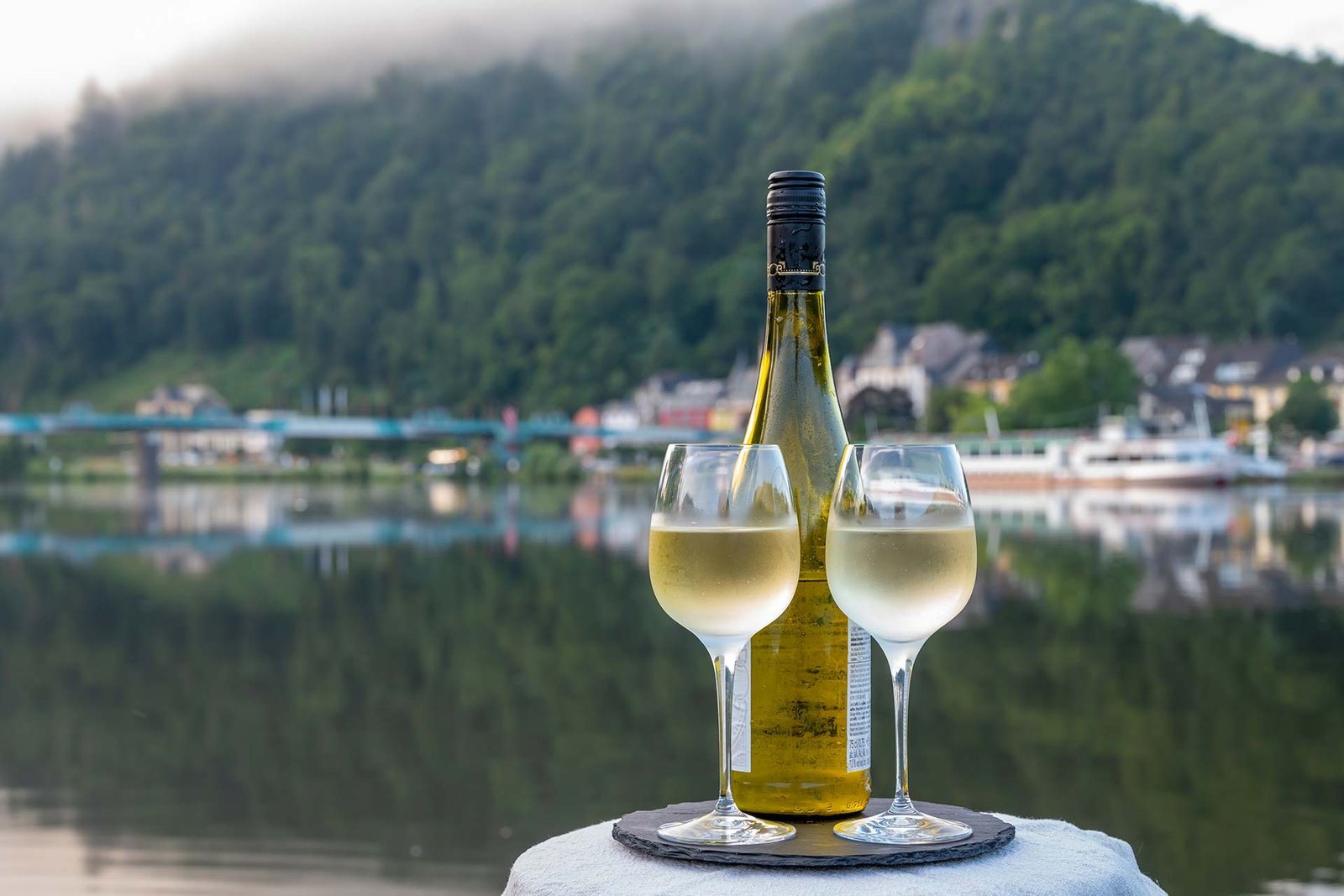
Germany is known for its beer, but it also produces world-class wine. The Moselle Valley is famous for its Rieslings and terraced vineyards. Visit picturesque towns like Cochem and Bernkastel-Kues for wine tastings with scenic views.
Germany may be famed for its beer culture, but for true connoisseurs and curious travelers, the Moselle Valley offers a world-class wine experience that rivals any in Europe. Nestled between steep slate hills and winding river bends, this region is the heartland of German winemaking—most notably, home to the finest Rieslings on Earth.
From historic vineyards and romantic villages to intimate cellar tastings and sweeping vineyard vistas, indulging in wine in the Moselle Valley is about more than just flavor—it's about story, place, and passion.
Where Is the Moselle Valley?
The Moselle Valley stretches along the Moselle River, winding its way through western Germany from Trier to Koblenz, near where the river joins the Rhine. It’s part of the Rhineland-Palatinate state and forms one of the country’s most picturesque and historic wine-growing areas.
Fun Fact: The Moselle is one of the oldest wine regions in Europe, with viticulture dating back to Roman times.
What Makes Moselle Wine So Special?
The Moselle Valley is world-renowned for producing elegant, aromatic, and beautifully balanced Riesling wines, thanks to its unique terroir:
- Steep slate slopes reflect sunlight and retain heat, aiding grape ripening.
- The cool climate extends the growing season, allowing for rich aromas and natural acidity.
- Minimal intervention winemaking respects the purity of the grape and the land.
These conditions create wines with vibrant minerality, crisp acidity, and delicate fruit profiles, often with aging potential of decades.
Top Wine Towns to Explore
1. Bernkastel-Kues
A fairytale town with half-timbered houses, cobblestone streets, and the Dr. Loosen and Weingut Dr. Pauly-Bergweiler estates. Enjoy tastings by the Moselle and hike up to Burg Landshut for panoramic views.
2. Cochem
Famous for Reichsburg Castle, riverside charm, and cozy wine taverns. A perfect place for scenic walks and laid-back wine experiences.
3. Traben-Trarbach
Known for its Jugendstil architecture and historic wine cellars, including underground wine vaults that host seasonal wine festivals and events.
4. Trier
Germany’s oldest city with Roman roots and excellent nearby vineyards. Combine ancient history with exceptional wine tasting.
Must-Try Wine Experiences
1. Wine Tastings at Local Estates
Many family-run Weingüter (wineries) offer walk-in tastings or pre-booked cellar tours.
- Top Estates to Visit:
- Weingut Markus Molitor (Wehlen)
- Weingut Joh. Jos. Prüm (Bernkastel)
- Weingut Clemens Busch (Pünderich)
2. Vineyard Walks & Wine Trails
Follow marked Weinlehrpfad (wine educational paths) that guide you through vineyards with info boards on grapes, soil, and history.
- Moselsteig Trail: A multi-day hiking route with views of river bends and wine terraces.
3. Wine Festivals
Plan your visit during one of the Moselle’s many Weinfeste—colorful wine festivals with live music, parades, and regional cuisine.
- Highlights:
- Bernkasteler Weinfest (late August/early September)
- Mosel Wine Week in Trier
- Cochem Wine Festival
Food Pairings: Savor the Region
A glass of Moselle Riesling is best enjoyed with regional dishes that enhance its freshness and balance.
- Zwiebelkuchen (onion tart)
- Winzerplatte (vintner’s platter of cured meats and cheeses)
- Forelle Müllerin Art (pan-fried trout)
- Apfelstrudel with a late-harvest Riesling
Don’t forget to sample Federweißer, a young, slightly fermented wine, typically served in early autumn with savory onion tarts.
Where to Stay for the Ultimate Wine Escape
Stay in charming guesthouses, vineyard inns, or even wine-themed hotels, often run by local winemakers who are happy to share their craft.
- Weinromantikhotel Richtershof (Mülheim an der Mosel) – A luxurious blend of heritage and hospitality
- Moselschlösschen Spa & Resort (Traben-Trarbach) – Perfect for a wellness and wine retreat
- Boutique B&Bs in Bernkastel-Kues – Cozy and walkable to tasting rooms
Getting Around the Moselle Valley
- By Car: Offers flexibility to explore small villages and hidden estates.
- By Bike: The Moselradweg (Moselle Cycle Path) is ideal for cycling enthusiasts with scenic riverside routes.
- By Boat: River cruises between Trier and Koblenz provide a leisurely way to explore wine villages and landscapes.
- By Train: Convenient regional trains connect major wine towns, though more rural estates may require a car or bike.
Sustainability and Modern Winemaking
The new generation of Moselle winemakers is embracing organic, biodynamic, and sustainable practices, creating wines that respect the environment while elevating quality.
Look for: “Ökologisch zertifiziert” labels for organic wines, and explore natural wine producers gaining acclaim across Europe.
9. Cycle Through the Bavarian Countryside
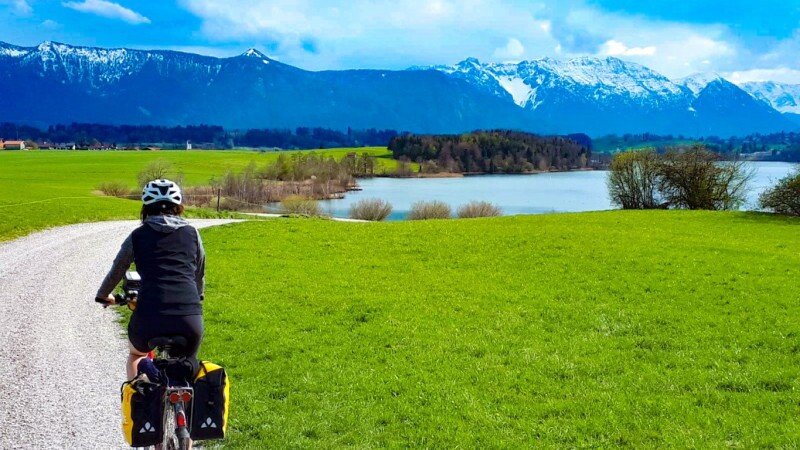
Rent a bike and explore the rolling meadows, alpine lakes, and storybook villages of Bavaria. Popular routes include the Romantic Road and paths around Lake Chiemsee.
The Bavarian countryside is an idyllic paradise for cyclists seeking both adventure and tranquility. With its rolling hills, verdant meadows, ancient castles, and quaint villages, cycling through this picturesque region is an experience that offers more than just scenic beauty—it's a journey through history, tradition, and nature.
From the cobblestone streets of Munich to the foothills of the Alps, Bavaria’s cycling routes take you through some of Germany’s most stunning landscapes, making it an ideal destination for cycling enthusiasts of all levels.
Why Cycle in the Bavarian Countryside?
Bavaria is synonymous with natural beauty, and its countryside offers diverse cycling routes that cater to all skill levels. Whether you’re a seasoned cyclist or a leisurely traveler, there’s a trail for you. Here’s why cycling in Bavaria is an experience like no other:
- Breathtaking Landscapes: From lush valleys to snow-capped mountains, cycling through the Bavarian countryside allows you to witness nature at its most pristine.
- Rich Culture & History: Stop by medieval castles, traditional villages, and ancient abbeys that tell the story of Bavaria’s storied past.
- Well-Marked Routes: With over 20,000 kilometers of cycling paths, Bavaria offers an extensive network of well-maintained routes that are easy to follow and explore.
- Authentic Bavarian Hospitality: After a day of cycling, indulge in hearty local cuisine at rustic taverns or cozy beer gardens, where you’ll be greeted with warm Bavarian hospitality.
Top Cycling Routes in the Bavarian Countryside
1. The Romantic Road (Romantische Straße)
One of the most famous cycling routes in Germany, the Romantic Road stretches from Würzburg to Füssen, passing through idyllic Bavarian villages, medieval towns, and fairy-tale castles. The route covers around 350 kilometers and is perfect for cyclists seeking both cultural experiences and breathtaking views.
Key Highlights:
- Neuschwanstein Castle: Cycle through the stunning scenery leading up to the fairytale castle that inspired Disney’s Sleeping Beauty Castle.
- Rothenburg ob der Tauber: A medieval gem with cobbled streets, fortifications, and charming shops.
- Augsburg: A UNESCO World Heritage Site known for its Renaissance architecture.
2. The Altmühl Valley Cycle Path (Altmühltal-Radweg)
The Altmühl Valley offers a more serene and peaceful cycling experience. The Altmühl River winds its way through lush landscapes, offering spectacular views of rock formations, wooded hills, and ancient castles. This route is approximately 200 kilometers long and is perfect for a relaxed, nature-filled ride.
Key Highlights:
- Solnhofen: Visit the area famous for its fossil-rich limestone and the Jurassic museum.
- Dinkelbühl: A charming medieval town with well-preserved fortifications.
- The Danube: Cycle alongside the river and enjoy scenic views of its wide stretches.
3. The Lake Constance Cycle Path (Bodensee-Radweg)
The Lake Constance region offers one of the most picturesque cycling routes in Germany, ideal for cyclists who enjoy a mix of water views and alpine scenery. This route runs for about 260 kilometers, taking you through charming lakeside villages and rolling vineyards.
Key Highlights:
- Lindau: A quaint island town with a lighthouse and Mediterranean-style architecture.
- Meersburg Castle: Overlooking the lake, this medieval castle offers rich history and stunning vistas.
- The Alps: Enjoy views of the Swiss Alps from the lakeside paths.
4. The Bavarian Forest Cycle Path (Bayerwald-Radweg)
For those seeking a more rugged and natural experience, the Bavarian Forest Cycle Path offers a true escape into nature. This 300-kilometer route takes you through the thick forests, deep valleys, and charming villages of the Bavarian Forest National Park.
Key Highlights:
- Hohenbogen: A mountain that provides panoramic views of the Bavarian countryside.
- Chammünster: A picturesque village with a historic monastery and scenic surroundings.
- National Park: Enjoy cycling through protected forest areas that are rich in wildlife.
5. The Isar Cycle Path (Isarradweg)
For a more urban cycling experience combined with countryside beauty, the Isar Cycle Path is a great choice. Starting in Garmisch-Partenkirchen and winding its way to Munich, this path takes you along the Isar River, offering stunning views of the Alps and Bavaria’s iconic green fields.
Key Highlights:
- Garmisch-Partenkirchen: A renowned ski resort with a rich alpine culture.
- The Isar River: Cycle through peaceful paths along one of Germany’s most scenic rivers.
- Munich: End your journey in the vibrant city, enjoying its beer gardens and historical landmarks.
Tips for Cycling in the Bavarian Countryside
1. Prepare for Varying Terrain
While many routes are relatively flat, some, particularly near the Alps or Bavarian Forest, can be challenging. It’s recommended to have a well-maintained bike, preferably a mountain bike or touring bike, and be prepared for steep climbs in certain regions.
2. Renting a Bike
If you don’t have your own bike, renting is easy. Many towns along the cycling routes offer bike rental services. Electric bikes (e-bikes) are also a great option for those who want to enjoy the views without worrying about steep ascents.
3. Packing Essentials
Bring the following to ensure a smooth ride:
- A water bottle and snacks for energy
- Comfortable clothing and layers (weather in Bavaria can change quickly)
- Sunscreen for sunny days and rain gear just in case
- A repair kit and spare inner tubes for unexpected issues
4. Enjoy the Local Food
Bavarian cuisine is famous for its hearty flavors. After a long day of cycling, reward yourself with a traditional Bavarian meal, such as pretzels, sausages, and roast pork. Don't forget to enjoy a cold beer in a local beer garden.
10. Celebrate Christmas in a Traditional Market
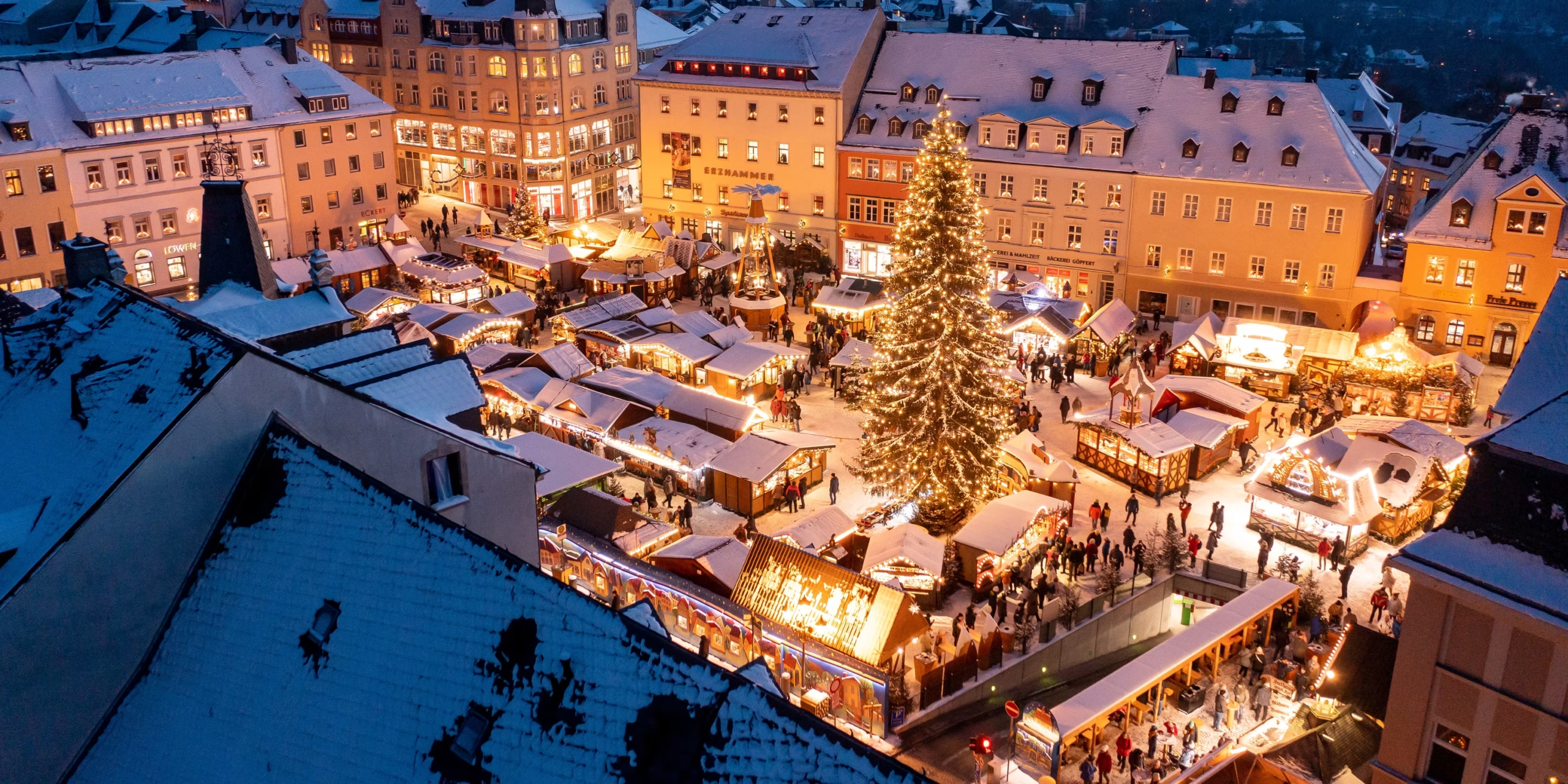
Germany’s Christmas markets are magical. Visit festive stalls selling hand-crafted ornaments, mulled wine, and gingerbread in historic town squares. Top markets include Nuremberg, Cologne, and Rothenburg ob der Tauber.
Germany is synonymous with the magic of Christmas markets, where centuries-old traditions, twinkling lights, and the aroma of mulled wine and roasted chestnuts fill the air. Known as Christkindlmarkt or Weihnachtsmarkt, these iconic markets are an integral part of the German holiday season, offering a festive experience that immerses you in the heartwarming spirit of Christmas.
With over 2,500 Christmas markets spread across the country, each one brings its own unique charm and traditions. From the quaint villages of Bavaria to the bustling streets of Berlin, visiting a traditional Christmas market in Germany is the ultimate way to experience the magic of the season.
Why Celebrate Christmas in a Traditional German Market?
German Christmas markets are more than just places to shop—they are an immersive experience steeped in history, culture, and holiday traditions. Here’s why they are a must-visit:
1. A Timeless Tradition
Germany’s Christmas markets date back to the late Middle Ages, with the oldest market, Dresden Striezelmarkt, established in 1434. These markets offer a unique blend of historical charm and festive spirit, making them the perfect destination for a traditional holiday celebration.
2. Magical Atmosphere
Walking through a German Christmas market feels like stepping into a winter wonderland. The streets are lined with beautifully decorated wooden stalls, all illuminated by thousands of twinkling fairy lights. The crisp winter air is filled with the scent of roasted almonds, spiced wine, and gingerbread, while the sounds of Christmas carols and festive music create a truly enchanting atmosphere.
3. Local Handicrafts and Unique Gifts
Germany’s Christmas markets are renowned for offering a wide range of handmade crafts, including wooden toys, glass ornaments, woolen scarves, and nativity sets. Shopping here allows you to take home one-of-a-kind gifts that reflect the country’s rich craftsmanship and holiday spirit.
4. Traditional Food and Drink
No visit to a German Christmas market is complete without indulging in traditional festive foods and drinks. From bratwurst to Lebkuchen (gingerbread), each market offers a unique selection of seasonal delights, perfect for fueling your exploration.
Top German Christmas Markets to Visit
1. Nuremberg Christkindlesmarkt
Considered one of the most famous and traditional Christmas markets in the world, Nuremberg Christkindlesmarkt is a must-see. Held annually in the city’s main square, the market is opened by the Christkind—a young angel who welcomes visitors and heralds the start of the festivities.
Key Highlights:
- Nuremberg Gingerbread: Known as Lebkuchen, these sweet treats are a local specialty.
- Historic Setting: The market is set against the backdrop of the Nuremberg Castle, offering a picturesque view.
- Traditional Gifts: Discover handmade ornaments, wooden toys, and regional crafts.
2. Munich Christkindlmarkt
Located in the heart of Munich’s Marienplatz, the Munich Christkindlmarkt is one of Germany’s largest and most beautiful Christmas markets. With over 150 stalls, it’s an ideal place to shop for Christmas gifts and enjoy delicious seasonal treats.
Key Highlights:
- Traditional Bavarian Food: Try Weißwurst (white sausage), pretzels, and roasted chestnuts.
- Historic Atmosphere: The market is set against the stunning backdrop of Munich’s Town Hall and the Frauendom Church.
- Ice Skating: The nearby Ice Sculpture Garden offers a fun experience for all ages.
3. Cologne Christmas Market
Cologne’s Christmas market is set in the shadow of the breathtaking Cologne Cathedral, a UNESCO World Heritage site. The market attracts thousands of visitors each year, offering a perfect blend of history, culture, and holiday cheer.
Key Highlights:
- Spectacular Views: Enjoy views of the Cologne Cathedral, beautifully illuminated during the holiday season.
- Variety of Stalls: Browse stalls offering everything from handcrafted jewelry to seasonal treats like Stollen (fruitcake).
- Medieval Christmas Market: For a unique experience, visit the Alter Markt for a medieval-themed market with knights, jesters, and fairytale characters.
4. Dresden Striezelmarkt
As one of the oldest Christmas markets in Germany, Dresden Striezelmarkt has been welcoming visitors since 1434. Located in the heart of the Old Town, this market is known for its Stollenfest (Stollen Festival), where the city celebrates its famous fruitcake.
Key Highlights:
- Stollen Fruitcake: Taste the world-famous Dresden Stollen, a rich fruitcake filled with dried fruits, nuts, and marzipan.
- Historical Charm: Stroll through the medieval streets of Dresden’s Old Town, where the market is set.
- Handmade Ornaments: Discover Pyramiden (traditional wooden pyramids) and nutcrackers.
5. Rothenburg ob der Tauber Christmas Market
The medieval town of Rothenburg ob der Tauber transforms into a Christmas wonderland every year, offering a charming and intimate atmosphere. The Reiterlesmarkt (Rider’s Market) features wooden stalls adorned with festive decorations and twinkling lights.
Key Highlights:
- Medieval Setting: Experience the charm of Rothenburg’s cobblestone streets, city walls, and half-timbered houses.
- Local Handicrafts: Explore beautifully crafted Christmas ornaments, wooden toys, and pottery.
- Nightwatchman Tour: Take a guided evening tour with the famous Nightwatchman to learn about the town’s history.
Traditional Food and Drink at German Christmas Markets
The culinary delights at German Christmas markets are an essential part of the experience. Here are some traditional treats you must try:
- Glühwein (Mulled Wine): Warm, spiced red wine, often served with a slice of orange or a cinnamon stick.
- Bratwurst: Grilled sausages served in a bun with mustard or sauerkraut.
- Lebkuchen: Traditional gingerbread cookies, often decorated with icing or glazed with chocolate.
- Schmalzkuchen: Fried dough pastries that are dusted with powdered sugar.
- Reibekuchen: Crispy potato pancakes served with applesauce.
Shopping for Unique Christmas Gifts
A visit to a German Christmas market is a perfect opportunity to pick up unique and thoughtful gifts. Some of the most popular items include:
- Handcrafted Ornaments: Wooden decorations, glass baubles, and intricate figurines.
- Woolen Accessories: Scarves, mittens, and hats made from high-quality German wool.
- Traditional Nutcrackers: These charming wooden figurines are a symbol of Christmas in Germany.
- Puppets and Toys: Handmade wooden toys, dolls, and other childhood treasures.
- Candle Holders: Intricately carved candle holders shaped like traditional German motifs.
11. Attend a Classical Concert or Opera
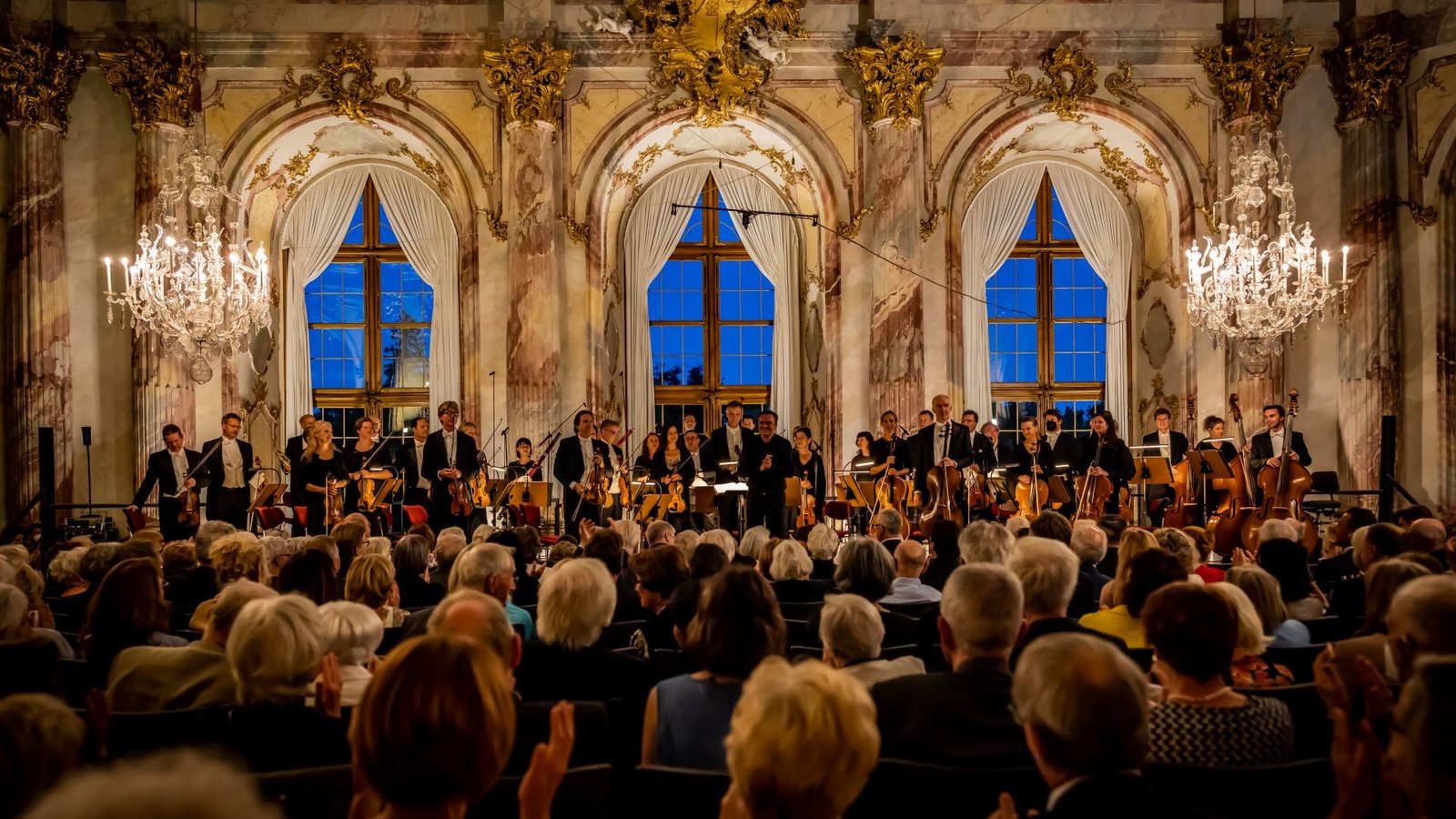
Germany has a proud musical tradition, home to legends like Bach, Beethoven, and Wagner. Attend a concert at the Berlin Philharmonie, a Wagner opera in Bayreuth, or a Mozart performance in Leipzig.
Germany has long been celebrated as the birthplace of some of the greatest composers and musicians in history, including Ludwig van Beethoven, Johann Sebastian Bach, Wolfgang Amadeus Mozart, and Richard Wagner. With such a rich musical heritage, it’s no surprise that the country remains a global hub for classical music and opera. Whether you are a seasoned aficionado or a newcomer to the world of classical performance, attending a classical concert or opera in Germany offers an unparalleled experience.
From intimate chamber concerts in historic halls to grand opera performances in world-renowned venues, Germany offers a diverse and deeply immersive classical music scene that continues to captivate audiences worldwide.
Why Attend a Classical Concert or Opera in Germany?
1. A Legacy of Musical Excellence
Germany’s connection to classical music runs deep. The country has been home to the world’s most influential composers and musicians for centuries, shaping the landscape of Western music as we know it. Today, many of these composers’ works are still performed in their hometowns, and their legacy continues to influence contemporary musicians. Experiencing a classical concert or opera here allows you to connect with that rich tradition.
2. World-Class Venues
Germany boasts some of the finest concert halls and opera houses in the world. With acoustics that are revered globally, venues like the Berliner Philharmonie and the Semperoper Dresden offer an exceptional auditory experience, elevating the performance to new heights. These spaces are not only architectural marvels but also offer state-of-the-art technology to ensure every note reaches the audience with perfect clarity.
3. Vibrant Classical Music Scene
Germany’s classical music scene is both diverse and dynamic, offering everything from large symphonic works performed by prestigious orchestras to smaller, more intimate performances in historic venues. Cities like Berlin, Munich, Dresden, and Leipzig are hotspots for classical performances, offering a year-round calendar filled with concerts, operas, and festivals.
4. A Cultural Experience Like No Other
Attending a classical concert or opera in Germany is more than just a musical experience—it’s a cultural journey. The performances often reflect the rich artistic and cultural history of their respective cities. Whether you're attending a Bach concert in Leipzig or a Wagner opera in Bayreuth, these performances provide insight into Germany’s storied history and cultural identity.
Must-Visit Venues for Classical Music in Germany
1. Berlin Philharmonie - Berlin
As one of the most iconic concert halls in the world, the Berlin Philharmonie is the beating heart of classical music in Germany. Home to the world-renowned Berliner Philharmoniker, this venue offers exceptional acoustics and a world-class stage for top-tier performances. Whether it’s a symphonic concert or a chamber music performance, the Berlin Philharmonie delivers an unforgettable musical experience.
Key Highlights:
- World-Class Orchestras: Hear performances by the Berliner Philharmoniker and other renowned international orchestras.
- Exceptional Acoustics: Designed by architect Hans Scharoun, the venue’s acoustics are praised for their clarity and warmth.
- Historic Location: Situated in the heart of Berlin, you’re also close to the city’s cultural landmarks.
2. Semperoper - Dresden
The Semperoper is one of the most famous opera houses in the world, known for its magnificent architecture and rich history. It is home to the Dresden State Opera and regularly hosts some of the finest classical performances, including works by Wagner (whose operas are especially celebrated here).
Key Highlights:
- Opera Performances: The Semperoper is a must-visit for opera lovers, showcasing both classic and contemporary productions.
- Architectural Beauty: The opera house is a masterpiece of baroque architecture, with stunning interiors and a rich, opulent atmosphere.
- Wagner's Legacy: Wagner’s operas, particularly those associated with the Bayreuth Festival, are often performed here, honoring the composer’s deep ties to the region.
3. Bayerische Staatsoper - Munich
Known as the Bavarian State Opera, the Bayerische Staatsoper in Munich is one of Europe’s most respected opera houses. Its repertoire spans from Baroque opera to contemporary works, offering a rich variety for music enthusiasts. The National Theatre Munich is the venue’s main stage, where the grand operas come to life.
Key Highlights:
- Prestigious Performances: Home to some of the best opera performances in Germany, including productions by leading conductors and directors.
- Stunning Venue: The National Theatre Munich is a neoclassical masterpiece with exquisite interiors.
- Seasonal Opera Festival: Munich is also known for its Opera Festival in the summer, drawing global talent.
4. Gewandhaus - Leipzig
Leipzig is another significant center for classical music in Germany, and the Gewandhaus is the city’s premier concert hall. As the home of the Gewandhausorchester, one of the oldest orchestras in the world, this venue offers a diverse mix of classical music performances in a magnificent setting.
Key Highlights:
- Historic Significance: The Gewandhausorchester, established in 1743, is known for its long and rich history in classical music.
- Chamber Music: In addition to orchestral performances, the Gewandhaus hosts intimate chamber music concerts, perfect for music lovers seeking a more personal experience.
- Bach’s Legacy: Leipzig is famous for its association with Johann Sebastian Bach, and the Gewandhaus often performs his works in tribute.
5. Bayreuth Festspielhaus - Bayreuth
For opera enthusiasts, Bayreuth is a pilgrimage site. The Bayreuth Festspielhaus, dedicated entirely to the operas of Richard Wagner, is one of the world’s most renowned venues for experiencing Wagner’s masterpieces in their most authentic form.
Key Highlights:
- Wagner’s Operas: The Bayreuth Festival in summer is a major event, offering Wagner’s operas performed as they were intended—on the stage where they first premiered.
- Special Acoustics: The Festspielhaus is known for its unique acoustics, designed specifically to suit Wagner’s complex orchestrations.
- Cultural Significance: The venue is not just a concert hall, but a center for Wagner’s legacy and an essential destination for opera lovers.
Tips for Attending a Classical Concert or Opera in Germany
1. Plan Ahead
Many of Germany’s top concert halls and opera houses host performances year-round, but tickets for popular shows can sell out quickly, especially during the high season (such as the summer Bayreuth Festival or winter holiday concerts). Be sure to book your tickets in advance.
2. Dress the Part
Classical concerts and opera performances in Germany often have a formal atmosphere. While it’s not necessary to wear a tuxedo or evening gown, dressing smartly is recommended. Many venues, such as the Semperoper and Bayerische Staatsoper, have a more formal dress code.
3. Arrive Early
Arriving early gives you time to soak in the venue’s ambiance, explore the stunning architecture, and enjoy a drink at the venue’s bar. It’s also a great way to ensure a smooth entry, especially for popular performances.
4. Respect the Etiquette
In German classical music culture, silence is golden. Refrain from talking during the performance and turn off your phone before the concert begins. Applaud at appropriate moments—after the completion of a movement or at the end of a piece, but avoid clapping between movements unless the conductor gestures for applause.
12. Discover Roman History in Trier
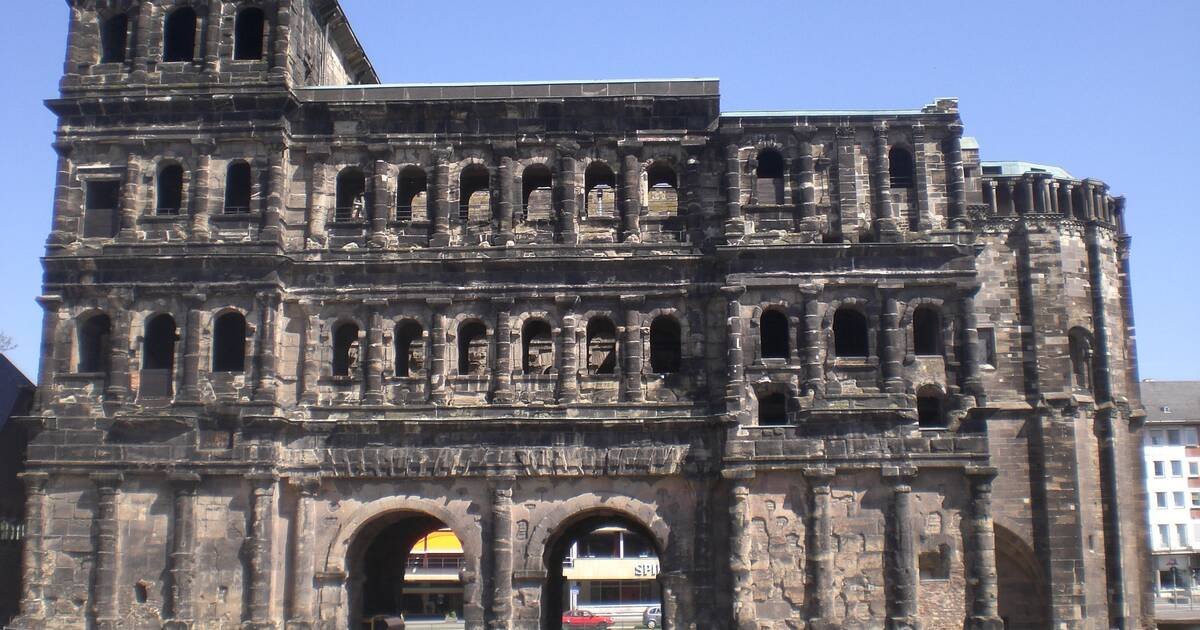
One of Germany’s oldest cities, Trier is packed with Roman ruins, including the Porta Nigra gate, an ancient amphitheater, and impressive baths. It’s a fascinating destination for history lovers.
Nestled along the banks of the Moselle River, the charming city of Trier is often overlooked by tourists, yet it is one of Germany’s most historically significant destinations. Known as the oldest city in Germany, Trier boasts a remarkable collection of Roman ruins and cultural heritage that transport visitors back to the time of the Roman Empire.
As the ancient capital of the Roman province of Gallia Belgica, Trier was once a thriving metropolis under Roman rule. Today, it is a UNESCO World Heritage Site, showcasing a wealth of architectural marvels that reveal the grandeur of Rome's imperial past. Whether you're a history enthusiast or simply in search of a unique cultural experience, a trip to Trier offers an immersive journey into the heart of Roman history.
Why Visit Trier for Roman History?
1. A Rich Roman Legacy
Trier was founded by the Romans in the late 1st century BCE and became an important center of administration, culture, and religion. Under Emperor Constantine the Great, it flourished as the Imperial residence and saw the construction of many monumental structures, some of which still stand today. Visiting Trier allows you to walk through the remnants of a once mighty empire and experience the grandeur of its past.
2. UNESCO World Heritage Status
Trier’s Roman sites are so well-preserved that they’ve earned a place on the UNESCO World Heritage List. This recognition speaks to the extraordinary historical and architectural value of the city’s Roman monuments. With over 2000 years of history, Trier offers a rare opportunity to explore Roman architecture in its authentic form.
3. A Scenic and Accessible Destination
Trier is located in western Germany, just a short distance from the Luxembourg and France borders. The city itself is picturesque, surrounded by rolling hills and vineyards, offering a blend of ancient history and natural beauty. Its compact size and well-preserved historical sites make it an ideal destination for history buffs looking for a walking tour through time.
Must-See Roman Sites in Trier
1. Porta Nigra (Black Gate)
One of Trier’s most iconic landmarks, the Porta Nigra is a massive Roman city gate built around 180 CE. It is one of the best-preserved Roman gates in Europe and a stunning example of Roman military architecture. The name “Porta Nigra” comes from the dark color of the sandstone used in its construction, which has aged over time.
Key Highlights:
- Impressive Scale: The gate stands 30 meters tall and was originally part of a larger Roman fortification system.
- Historical Significance: The Porta Nigra served as the northern entrance to the Roman city and was later converted into a church in the Middle Ages.
- Panoramic Views: Climb to the top of the gate for breathtaking views of Trier and its surrounding countryside.
2. Trier Amphitheatre
Built in the 2nd century CE, the Trier Amphitheatre once held 20,000 spectators who gathered to watch gladiator fights, animal hunts, and other spectacles. It was one of the largest amphitheaters in the Roman Empire and remains an impressive testament to the grandeur of Roman entertainment.
Key Highlights:
- Ancient Arena: Imagine the roar of the crowds as you stand in the same arena where gladiators once fought for their lives.
- Underground Chambers: Explore the remnants of the underground passageways where animals and performers would have entered the arena.
- Historical Exhibits: The nearby museum offers insights into the history of the amphitheater and its role in Roman culture.
3. Roman Imperial Baths (Kaiserthermen)
The Kaiserthermen are the remains of a vast Roman bathing complex, believed to have been constructed during the reign of Emperor Constantine in the early 4th century CE. These baths were an integral part of Roman social life, offering not just a place for bathing, but also for relaxation and socializing.
Key Highlights:
- Well-Preserved Ruins: The remains of the baths are remarkably well-preserved, including parts of the heating system and large vaulted chambers.
- Roman Engineering: The sophisticated engineering behind the baths, including the underfloor heating system, showcases the Romans' mastery of architecture.
- Guided Tours: Learn about the complex’s function and the role of baths in Roman society through interactive exhibits and informative tours.
4. Basilica of Constantine (Konstantinbasilika)
The Basilica of Constantine is a massive Roman structure built by Emperor Constantine around 310 CE. It is one of the best-preserved Roman palaces in Europe and once served as Constantine’s throne room. The building’s sheer scale and architectural brilliance make it a must-visit when exploring Trier’s Roman heritage.
Key Highlights:
- Stunning Architecture: The Basilica is an imposing structure, with a high vaulted roof and vast interior.
- Cultural Significance: It was used as a court room and audience hall by Emperor Constantine and was later repurposed as a church.
- Impressive Interior: The interior’s expansive space and columns provide a glimpse into the grandeur of Roman imperial architecture.
5. Roman Bridge (Römerbrücke)
The Roman Bridge in Trier is one of the oldest bridges still in use today, originally constructed in the 2nd century CE. The bridge spans the Moselle River and was a vital link between the Roman city and the surrounding regions.
Key Highlights:
- Historical Function: The bridge was a key route for military and commercial traffic, linking Trier with other important Roman settlements.
- Architectural Beauty: The stone arches of the bridge are a striking example of Roman engineering and construction techniques.
- Cultural Landmark: As one of the oldest surviving Roman bridges, it offers a unique connection to the past.
6. Amphitheater Museum and Archaeological Site
Located near the Trier Amphitheatre, this museum and archaeological site offer in-depth insights into Roman life in Trier. The museum showcases a collection of artifacts discovered during excavations in the area, including coins, pottery, and sculptures.
Key Highlights:
- Roman Artifacts: The museum houses a variety of Roman-era artifacts, providing a glimpse into daily life during the Roman Empire.
- Archaeological Tours: Take a guided tour of the archaeological site to see ongoing excavation work and learn about Trier’s Roman past.
Tips for Exploring Trier’s Roman History
1. Start with the Porta Nigra
A visit to Trier’s Roman history should begin with the Porta Nigra, as it’s the most iconic and easily accessible Roman site in the city. From here, you can easily walk to other historical landmarks, including the Trier Amphitheatre and Roman Imperial Baths.
2. Consider a Guided Tour
To gain deeper insights into the history of Trier and its Roman heritage, consider taking a guided tour. Knowledgeable guides can provide fascinating historical context and bring the ancient ruins to life.
3. Wear Comfortable Shoes
Trier’s Roman sites are spread throughout the city, and much of the exploration involves walking on cobblestone streets and uneven ground. Be sure to wear comfortable shoes for your journey through the city’s ancient past.
4. Explore the Surroundings
Trier is set amidst beautiful vineyards and picturesque countryside. Take time to stroll through the charming streets of the Old Town or enjoy a scenic walk along the Moselle River after your visit to the Roman sites.

